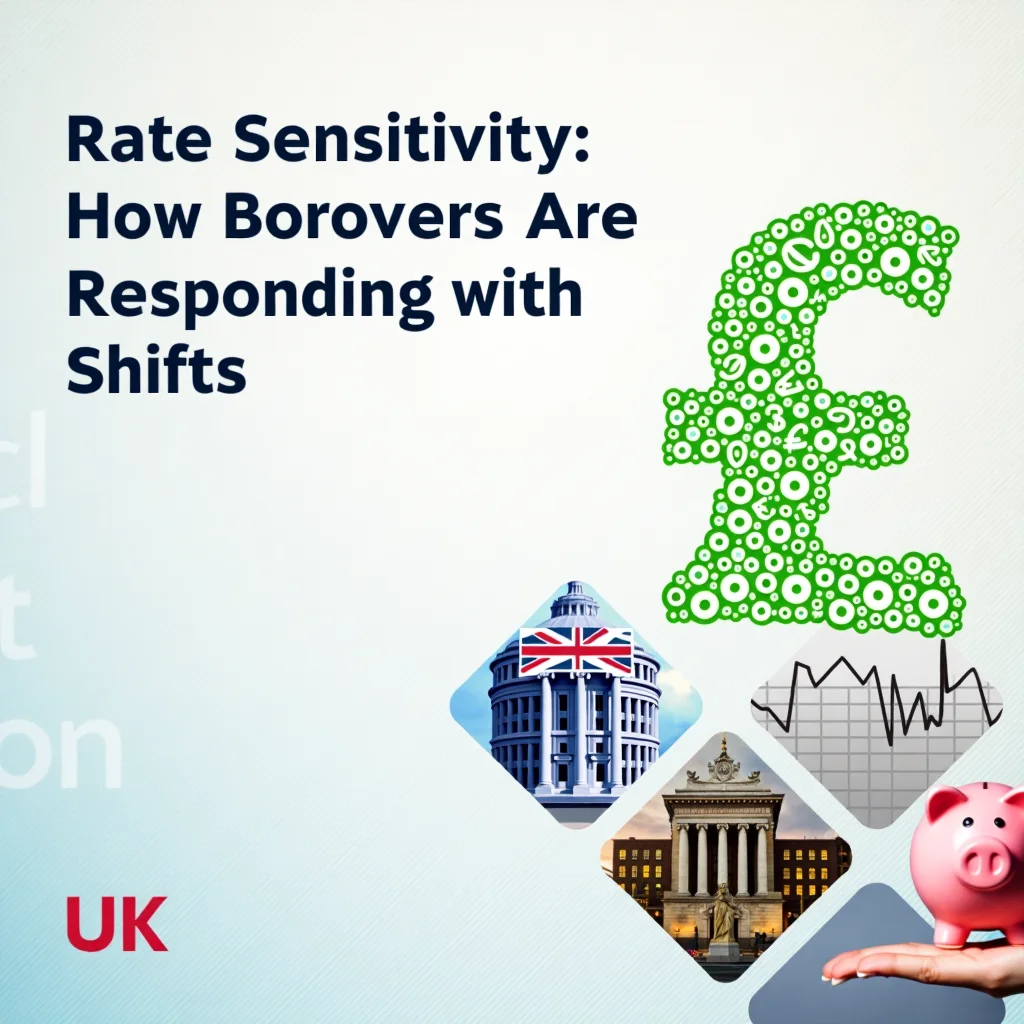As we move deeper into 2023, interest rates continue to be a major source of uncertainty in the financial markets. With fluctuations occurring regularly, borrowers are becoming increasingly sensitive to rate changes, leading many to reassess their borrowing strategies. This article explores how borrowers are responding to these shifts and navigating the unpredictable terrain of fluctuating borrowing costs.
With the ongoing volatility in global markets, combined with central banks' continued efforts to manage inflation, interest rates have been subject to rapid fluctuations throughout 2023. The Bank of England and other central banks have implemented various monetary policies to stabilize economies, influencing the borrowing landscape in significant ways. As we examine this topic in greater detail, we'll focus on how these shifts are shaping borrower behavior, and what steps consumers can take to protect their financial future in a fluctuating rate environment.
Understanding Rate Sensitivity in 2023
Market Indicators: Rate Impact
Fixed-Rate Loans
Increased demand
Variable-Rate Products
Higher volatility
Digital Tool Adoption
Enhanced decision-making
Rate sensitivity refers to the extent to which borrowers adjust their borrowing behavior in response to changes in interest rates. This is particularly relevant in 2023, as many consumers are facing fluctuating borrowing costs amidst an uncertain economic environment. In an era where rates can swing dramatically within a short period, borrowers are reevaluating their financial strategies to ensure they are protected from future rate hikes. This heightened sensitivity is not limited to mortgages, but extends to personal loans, credit cards, and other forms of credit.
As interest rates rise or fall, the cost of borrowing also shifts, influencing consumer decisions across the board. Some borrowers may look to lock in rates at their current levels, while others may opt to pay down debt more quickly to minimize exposure to future rate increases. This sensitivity to interest rates is shaping broader consumer confidence in the credit market and influencing overall borrowing patterns. For many borrowers, the priority is not just securing the lowest possible rate, but ensuring long-term affordability and financial stability.
Borrower Strategies: How to Adapt to Interest Rate Shifts
Popular Borrower Adaptations
Fixed-Rate Loan Preference
Borrowers are increasingly choosing fixed-rate loans to lock in current rates and gain predictability in monthly payments.
Strategic Refinancing
Many homeowners are refinancing to take advantage of lower rates or consolidate debt for reduced monthly payments.
Digital Tool Adoption
Digital tools provide real-time updates on rates and personalized loan recommendations for better decision-making.
Accelerated Debt Repayment
Some borrowers are making additional payments toward principal to reduce exposure to potential rate increases.
In response to the ongoing fluctuations in interest rates, borrowers have adopted a variety of strategies to manage their debt more effectively. One of the most common strategies is opting for fixed-rate loans, which allow borrowers to lock in current rates and reduce the risk of facing higher payments if interest rates increase in the future. By securing a fixed-rate loan, borrowers can gain predictability and stability in their monthly repayments, offering peace of mind in an otherwise uncertain financial landscape.
Another popular strategy is refinancing. Refinancing involves replacing an existing loan with a new one, often at a lower interest rate or more favorable terms. In 2023, many homeowners are refinancing their mortgages to take advantage of lower rates or to consolidate debt, allowing them to reduce monthly repayments. Borrowers are actively monitoring market trends and refinancing opportunities, as shifting economic conditions may present favorable windows for securing better loan terms.
Additionally, digital financial tools have become an essential part of modern borrowing strategies. These tools, including apps and online platforms, provide borrowers with real-time updates on interest rate changes and personalized loan recommendations. By using digital tools, borrowers can compare multiple lenders and loan products quickly, allowing them to make informed decisions and stay competitive in the market. This technological advancement has become increasingly important as the speed of rate changes accelerates in response to economic events, making timely decision-making more critical than ever.
The Role of Digital Platforms in Borrower Strategy
Real-Time Rate Tracking
Instant alerts and notifications about rate changes that affect borrowing costs
Loan Comparisons
Side-by-side analysis of loan options from multiple lenders with transparent terms
Budget Planning
Interactive tools that simulate payment scenarios and help borrowers prepare for rate changes
The integration of digital platforms into the borrowing process has drastically changed how consumers approach interest rate fluctuations. These platforms not only allow borrowers to track and compare rates in real-time but also offer tools for budgeting, financial planning, and loan management. By providing instant access to loan terms and current market conditions, digital tools have democratized the borrowing process, empowering consumers to make more informed decisions.
In addition to comparing loan offers, borrowers can also utilize these platforms to calculate the total cost of borrowing, taking into account all fees, interest, and repayment schedules. This level of transparency helps borrowers understand the true cost of a loan and ensure they are selecting the most cost-effective option based on their financial situation.
" The most resilient borrowers in 2023 are those who combine technological tools with sound financial principles. By leveraging digital platforms while maintaining a focus on long-term stability, borrowers can effectively navigate rate fluctuations and secure their financial future. "
- UK Finance Association, April 2023
Guidance for Navigating Interest Rate Fluctuations in 2023
Practical Strategies for Borrowers
Consider Fixed-Rate Loans
For borrowers seeking stability, opting for fixed-rate loan options can provide peace of mind, as they lock in current rates and protect against future hikes. Fixed-rate mortgages, personal loans, and auto loans are all available in this format.
Monitor Economic Indicators
Keep an eye on key economic indicators such as inflation rates, employment data, and central bank announcements. These factors influence borrowing costs, and understanding how these elements interconnect will help borrowers anticipate future interest rate movements.
Use Digital Platforms
Take advantage of digital tools to track interest rate changes, compare loan products, and receive personalized loan recommendations. This will ensure that borrowers are well-positioned to secure the best terms available in a changing market.
Consult Financial Advisors
Financial advisors can provide invaluable guidance in times of market volatility. By assessing personal financial goals and risk tolerance, an advisor can help borrowers determine the best strategy for navigating interest rate fluctuations and managing debt.
Pay Down High-Interest Debt
In a fluctuating rate environment, paying down high-interest debt can help reduce exposure to future rate increases. Focusing on credit cards, personal loans, and other high-interest debt will provide greater financial flexibility as rates shift.
With interest rates fluctuating throughout 2023, borrowers must remain proactive and strategic in managing their debt. By adopting these strategies, borrowers can better manage their finances and position themselves for success, regardless of what the future holds in terms of interest rate changes. The key is to remain flexible, informed, and proactive in the face of uncertainty.
Conclusion: Adapting to the Evolving Interest Rate Landscape in 2023
As the interest rate landscape continues to evolve throughout 2023, borrowers must remain vigilant and proactive in their financial planning. The increasing rate sensitivity among consumers is prompting a shift in borrowing strategies, with a growing emphasis on stability, transparency, and digital innovation. Borrowers are increasingly prioritizing fixed-rate loans, refinancing opportunities, and using digital tools to make timely and informed decisions.
Looking ahead, we can expect the integration of advanced analytics and digital tools to continue empowering borrowers. These innovations will provide borrowers with greater access to information, allowing them to make smarter decisions in an ever-changing market. As interest rates continue to fluctuate, consumers will need to stay informed, adapt their strategies, and remain agile in the face of uncertainty to secure a more stable financial future.
In conclusion, the ability to navigate the complexities of interest rate fluctuations is an essential skill for borrowers in 2023. By embracing digital solutions, staying informed, and making proactive financial decisions, borrowers can manage their debt effectively and ensure long-term financial stability, no matter what challenges the market throws their way.





